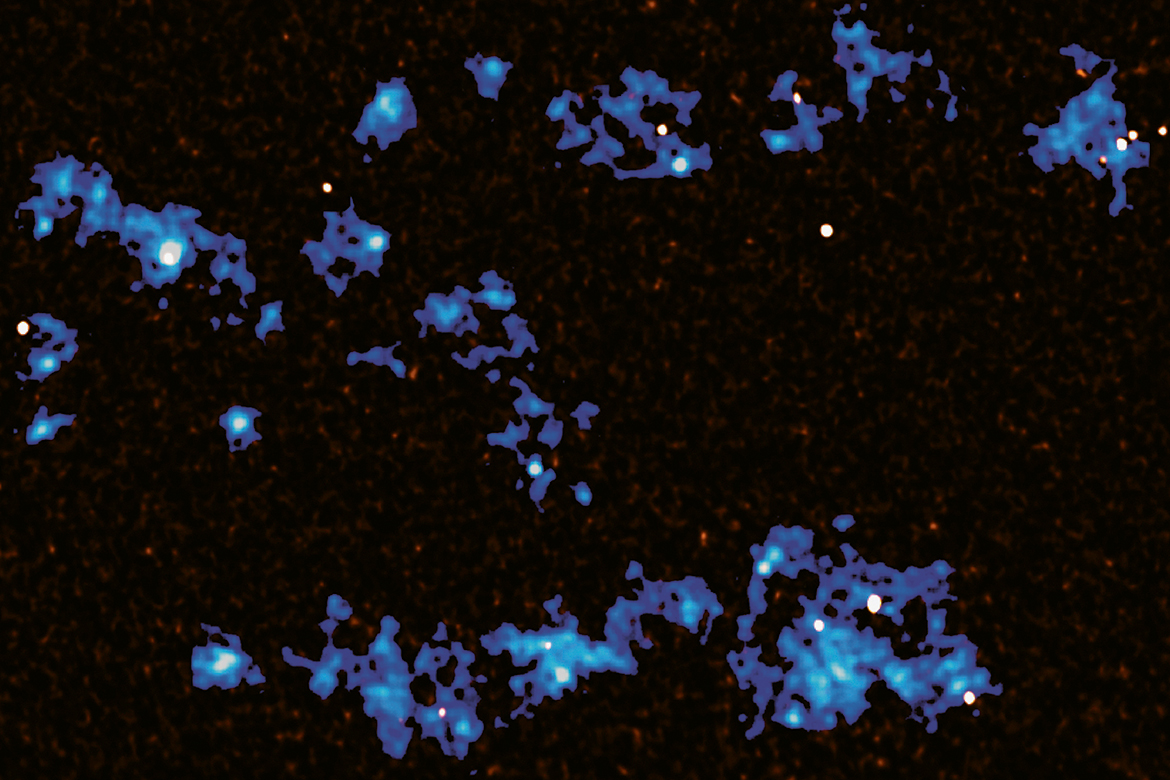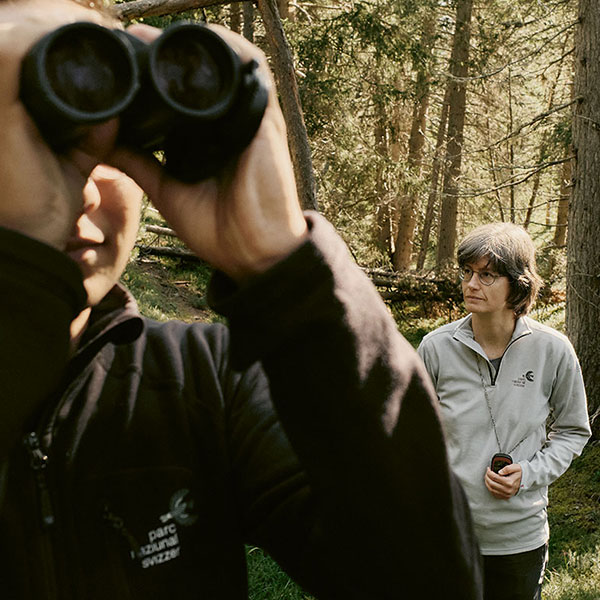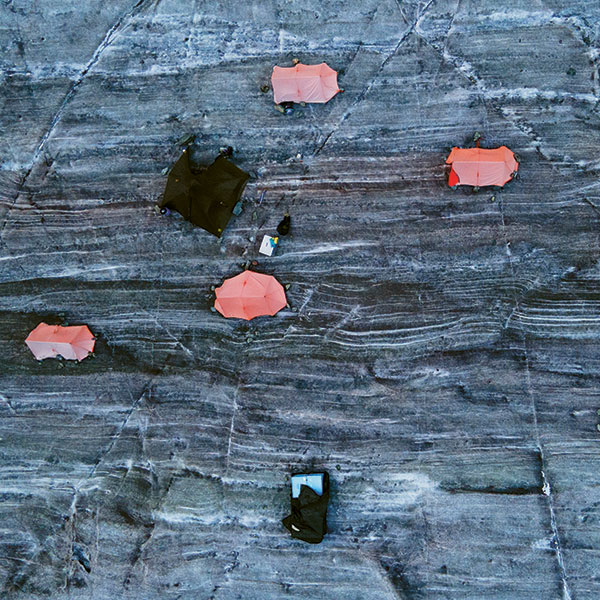Seeing the cosmic web
Galaxies in the Universe are organised along a web of gas filaments – at least that’s what cosmological simulations tell us. It’s extremely difficult to observe these giant gas structures, but this has now been achieved by an international team including scientists from ETH Zurich.

The Universe is full of gigantic gas filaments (here in blue). Galaxies form in those regions where the gas is especially dense (the white dots). | Image: Hideki Umehata
Modern cosmology tells us that the universe exploded into being with the Big Bang about 14 billion years ago. And that much of the hydrogen created in that fireball ended up collapsing into tenuous filaments of gas, creating a kind of cosmic spider’s web. Only now, however, have astronomers been able to observe these filaments in detail.
They are believed to provide the raw material that fuels stars, with galaxies forming where they cross. But their low density means they emit very faint light and are therefore hard to spot. Previously, scientists inferred their presence by studying the light they absorb from very bright objects behind them. But such measurements are limited to the line of sight between object and observer.
Now, an international team including Sebastiano Cantalupo from ETH Zurich has instead mapped several filaments in two dimensions by observing the gas’s own light emissions. The filaments in question are located in the SSA22 protocluster – a very dense accumulation of galaxies and gas about 12 billion light years from Earth – and are a whopping 3 million light years long. They emit ultraviolet light when the hydrogen gas they contain fluoresces. This occurs when they are illuminated by the intense radiation from the many new stars being formed.
The researchers captured this light using an optical instrument with a very wide field of vision at the European Southern Observatory’s Very Large Telescope in Chile. “We were only able to do that because of the very strong, rare sources of radiation within the filaments”, Cantalupo points out. “Mapping larger parts of the cosmic web in more typical regions of the universe requires much longer and more extensive measurements”. He has just started such a project, which should yield more extensive images of the cosmic web within a few years.




